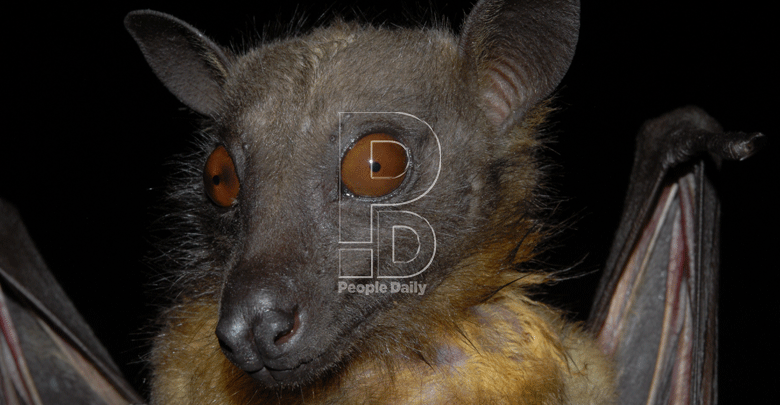The winged wonders: Why we still need bats

Subject to myth and negative beliefs, bats have been killed for one reason or another. Now experts call for their conservation, especially for the benefit they impart on the environment.
As Covid-19 continues to ravage the globe, it has awaken curiosity and dislike for bats in equal measure.
Scientists in a 2017 paper found that bats harboured more dangerous viruses than other species.
Bats, therefore, are blamed more than other mammals as sources of viruses because they are more diverse and have been disproportionately sampled.
But, the only true flying mammals, says Dr Paul Webala, Senior Lecturer of Wildlife Biology, Department of Forestry and Wildlife Management at Maasai Mara University, are like “a jig-saw puzzle of the ecosystem and their elimination is likely to lead to the collapse of the entire system.”
Bats provide key ecosystem services including pollination, seed dispersal, droppings and insect pest population reduction among others.
Feeding ranges of fruit-eating bats extend up to 90km or more from their roosting sites in one night, hence playing a vital role in dispersing seeds important plants.
Thus, they assist in maintaining genetic connectivity among fragmented patches in tropical rainforests and distant habitats.
Indeed, recent studies demonstrate seed dispersal by bats can be critical to reforestation of clear-cut areas, and that many tropics’ most economically important plants depend on them for this.
Other studies have also shown seedlings raised from bat dispersed seeds show higher germination rates and vigorous growth.
Vital species
Webala further notes that a majority of bats in Kenya, about 70-80 per cent, are insectivorous, playing a vital ecosystem service role by feeding on agricultural and forests pests.

“In one hour, a bat can feed on more than 600 insects and if at all they are millions of them in places such as Suswa Caves or at the huge volcanic tunnels of Chyulu Hills, tonnes of insects are removed in a single night and, therefore, in a year they help farmers save billions of dollars in avoided crop losses and unused pesticides.
Of course, this natural subsidy to agricultural productivity depends on healthy populations of bats,” says Dr Webala, adding that there are over 104 species of bats in Kenya.
Bats and other biological control agents pose a variable, ever-adaptable challenge to crop- and forest-destroying insects.
Therefore, the conservation of bats is crucial if these ecosystem services are to be stably managed in the face of burgeoning human population and resource extraction.
In other words, if you are wearing any cotton, if you drank your coffee or tea, if you ate your ugali or any other corn-based food, or one of many other Kenyan foods, your day has already been touched by bats.
Many insects bats feed on are vectors for pathogens that cause diseases in humans.
By feeding on them, insectivorous bats may have an indirect impact on disease outbreaks and pathogen prevalence.
Bat droppings (called guano) are valuable as a rich natural fertiliser, rich in phosphorus, nitrogen and potassium.
Cave-roosting bats produce large amounts of guano, extensively used in many countries for a long time as natural fertiliser.
It is also used in the United States in detoxifying industrial wastes, producing natural insecticides, improving detergents, and converting waste by-products into alcohol.
These benefits are set to be lost as threats such as habitat fragmentation creep in.
A lack of pollinators in disturbed forest patches impedes exchange of pollen between forest fragments and may reduce reproductive output of plants.
Although mistaken for being blind, bats are nocturnal creatures (highly active at night); they combine sight with a unique sonar-based echolocation (emit calls through the mouth and nose, and listen to the echoes of those calls that return from objects around them).
With this adaptation, they are able to find food, find their way around and also avoid predators.
The are diverse in their food preferences, foraging on insects, fruits, flowers, nectar, seeds, frogs, fish and small mammals.
Declining populations
Three bat species found only in Latin America, feed on mammal blood.
Webala says hunting and trade in bats and other wildlife, continues to jeopardise human’s safety.
As bat populations continue to decline globally, their potential for extinction only grows.
Although some of the challenges they face are inherent to their order, such as their long gestation periods and low recruitment, the primary cause of their decline is human activities.
“Bats are not the problem. Humans are to blame. We have destroyed their habitats leading to the elevation of risks of human-bat interface.
In parts of West and Central Africa, people feed on many wild animals, including bats, increasing potential disease spillover events,” adds Webala, a member of the International Union for Conservation of Nature Bat Specialist Group.
Dr Nancy Githaiga, manager, policy research and innovation at World Wide Fund Kenya says emergence of zoonotic diseases such as Covid-19 could be attributed to unsustainable human activities.
“Poor land use and illegal trade on wildlife, which culminated in the destruction of up to 68 per cent of wildlife loss is to blame.
This is why nature is unrelenting and our climate is flushing red warning signs,” she says, noting that there is an urgent need for humanity to strive to bend the curve of biodiversity loss.
Githaiga adds it is time to take urgent measures if we hope to reverse the negative trend and nurture a positive ecosystem.
Understanding the role played by bats helps us appreciate how their absence can greatly affect all facets of our lives.
To minimise zoonoses of pandemic potential, the solution lies in protecting natural habitats for wildlife, including bats, to minimize animal-human interfaces.
However, adds Webala, little attention has been accorded bat conservation. In Kenya there are only three bat experts.
The IUCN says about five per cent of bats are categorised as endangered and another 20 per cent are data deficient.
Many more species may be threatened. The Hildegarde’s Tomb Bat endemic to the coastal forests of Kenya and Tanzania, is categorised as endangered because of habitat loss and cave disturbances and closures.
In most African countries and Kenya, more emphasis is given to species that attract tourists and is largely pegged on the big five.
Despite being the second most diverse group of mammals in Kenya, no formal protection is given to the bats and they are not mentioned in the Wildlife Conservation and Management Act (2013).
“A lot of conservation focus and funding is given to the charismatic megafauna.
Many expertise and research are concentrated where there is big money. As researchers, we are trying to bring bats to the level of the big five,” he notes.
On the flip side, in other cities such as Houston and Austin, in the US and in Asia bats have been used to earn millions of dollars from tourism..
“In Kenya too, we can diversify tourist products by marketing bat caves and other roosting sites since we have millions,” explains Webala, who with his colleagues are already carrying out comprehensive bat studies across Kenya.
These studies are crucial for the management and conservation of this diverse and important group of mammals, but will also inform national public health and wildlife conservation policies.












